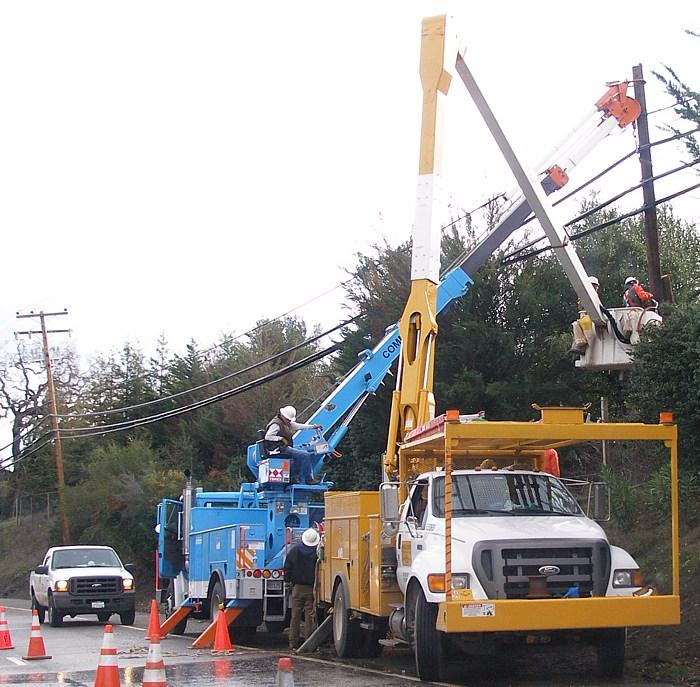
Fires ravaged several California communities last year. Their causes, impacts and how to plan for future disasters – as they relate to energy and energy systems – will be a high priority for local governments and state agencies for a long time.
Power lines may have played a role in either starting or adding to some of the fires. The loss of electricity caused by the fires hampered fire-fighting efforts, and seriously affected local communities during and after the fires. As a result, the safe operation of electrical transmission and distribution systems, and their resilience in the face of disasters, are now topics of urgent interest.
Two proceedings at the California Public Utilities Commission (CPUC) which touch on the safety issues are: Phase II of R. 15-06-009, which deals with Disaster/Emergency Preparedness of electric and water facilities and D.17-12-024 which addresses Safety Mapping & New Fire Safety Rules. CAL FIRE is in the process of updating the State’s fire hazard maps, which will be of great interest to local government planning and building officials.
One possible approach to improving the resilience of local electricity distribution systems is microgrids. Depending on their design, in the event of a larger-scale emergency, microgrids can ‘island’ their service area and continue providing electricity until the larger grid is restored. Microgrids can be as small as a single building or set of critical building functions, or as large as an entire corporate or academic campus, downtown business district, or neighborhood. Microgrids can be powered with traditional combustion energy sources (i.e. generators), by renewable energy sources (solar, wind, biogas) or a combination of these, and storage. There are several noteworthy examples of microgrids in California. The Blue Lake Rancheria microgrid allows this small, isolated community to remain self-sufficient in the event of storm, seismic or other grid impacts. Energize Fresno has deployed a ‘virtual’ microgrid, enabling local businesses to save energy, generate clean energy locally, and create local economic opportunities. Berkeley’s BEAT microgrid project ensures that critical city operations are not disrupted by larger power system interruptions. And, both UC Irvine and UC San Diego have large-scale microgrids for research and reliability purposes.
The CPUC’s storage proceeding, D.18-01-003, considered new rules to address the ways microgrids should connect to the existing grid. In mid-January, the CPUC-issued revenue stacking rules for energy storage projects which will permit ‘revenue stacking’, enabling storage projects to quantify and ‘stack’ multiple energy market benefits, making the installation of energy storage more cost-effective.
There is no CPUC proceeding, legislation or regulatory mandate for microgrids. The issue is touched on in various CPUC proceedings, such as the storage proceeding noted above and the interconnection rules rulemaking, R.17-07-007. To fill the void, the state’s leading energy agencies, CalISO, the Energy Commission and the CPUC, have drafted a Microgrid Roadmap. This roadmap provides policy and program guidance to state and local governments as they consider implementing microgrids.
The Local Government Sustainable Energy Coalition (LGSEC), a program of the LGC, closely monitors the CPUC proceedings and CEC regulatory developments and comments on proposed rules and regulations on behalf of its members. The safety and reliability of energy systems has always been important. As California faces the impacts of aging infrastructures, expanding urban development, and the increasing hazards of climate change-induced weather events, getting the policy frameworks for microgrids and their associated renewable energy and energy storage components right will be especially important. LGSEC will be working to advance the interests of local governments in these, and other, important energy policy decisions.
